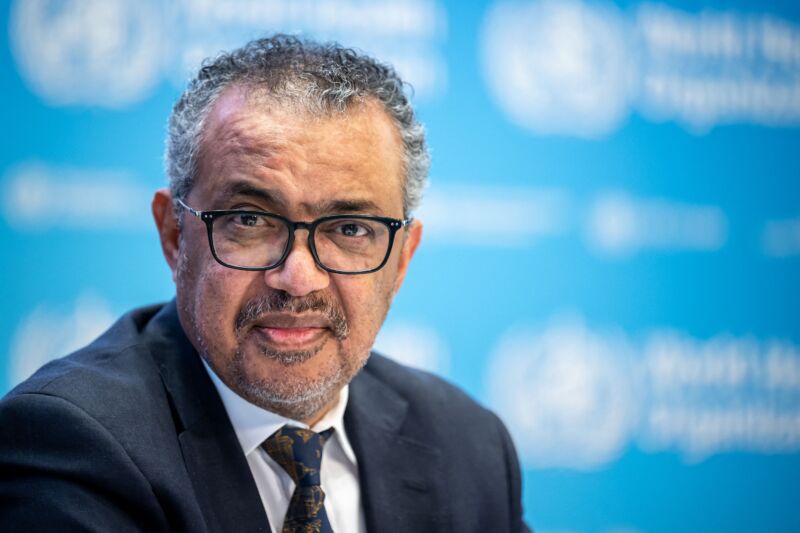Vaccine inequity, long COVID, and weak variant surveillance loom as big challenges.
As the US appears to be heading into another dreaded winter wave of COVID-19 infections, the World Health Organization is looking further ahead—and finding hope for the end of the global health emergency.
In a press conference on Wednesday in Geneva, WHO Director-General Tedros Adhanom Ghebreyesus said that discussion of the criteria for declaring the end of the pandemic would begin in January, when the agency's Emergency Committee will meet.
"We’re hopeful that at some point next year, we will be able to say that COVID-19 is no longer a global health emergency," Tedros said.
But he added plenty of caveats. "Of course, this virus will not go away. It’s here to stay, and all countries will need to learn to manage it alongside other respiratory illnesses including influenza and RSV, both of which are now circulating intensely in many countries."
He also noted looming challenges, such as the health burden of post-COVID and long-COVID conditions, which are poorly understood and treated but rising. On Wednesday, the US Centers for Disease Control and Prevention published an analysis finding that long COVID began appearing on death certificates this year. The condition was listed as a cause of death for 3,544 people, 0.3 percent of COVID-19 deaths. Experts say the number is likely an undercount, and deaths and disabilities from post-COVID conditions will rise in coming years.
Challenges near and far
Vaccine inequity still remains a critical problem. Only 1 in 5 people in low-income countries have been vaccinated, Tedros noted. And there remain significant weaknesses and gaps in surveillance of new SARS-CoV-2 variants, which leaves the world vulnerable to being blindsided by another omicron-like variant rise.
Still, there's reason to be hopeful. At this point last year, omicron began its rampage and killed 50,000 people each week. Last week, fewer than 10,000 people died of COVID-19 globally.
"That’s still 10,000 too many," Tedros said, "and there is still a lot that all countries can do to save lives. But we have come a long way."
The optimism may be dulled in the US (and elsewhere), however, as experts warn that COVID-19 transmission is on the rise as the country heads into end-of-year holidays. The rise is also alongside unusual waves of other respiratory illnesses, namely RSV and flu, which are already overwhelming hospitals around the country and hitting children particularly hard.
According to data tracking by The New York Times, reported COVID-19 cases are up 55 percent in the last two weeks, and hospitalizations, which typically lag case rises, are up 22 percent. Meanwhile, Americans have largely eschewed updated COVID-19 boosters, which revive protection and target the more recent BA.5 and BA.4 omicron subvariants. According to CDC data, only 13.5 percent of eligible Americans have rolled up their sleeve for the updated bivalent booster, including only 34 percent of people age 65 and older, who are at greater risk of severe disease.
- Karlston
-

 1
1




Recommended Comments
There are no comments to display.
Join the conversation
You can post now and register later. If you have an account, sign in now to post with your account.
Note: Your post will require moderator approval before it will be visible.